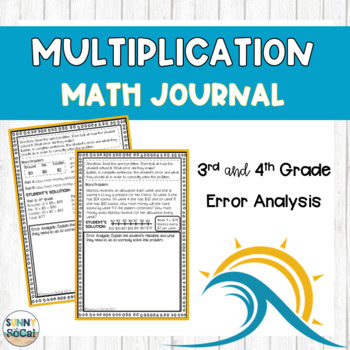Multiplication Math Journal Error Analysis and Problem Solving
- PDF
Description
Help your students build their conceptual understanding of multiplication!
In this math journal, students will analyze already-solved multiplication problems to find the error. They will explain the error in writing, and then model how to correctly solve the problem. This is excellent practice with many of the Standards of Mathematical Practice!
There are 24 unique problems, broken into two parts:
- 12 problems which have been solved incorrectly, using a variety of strategies, including:
- Arrays
- Multi-step equations
- Repeated addition
- Modeling with illustrations
- 12 complex word problems (these have NOT been pre-solved). Many of these include a Part A and a Part B, similar to what students see on tests such as MAPS, SBAC, PARCC, etc.
This is a great way to differentiate for students without having to create a bunch of centers!
- Your quick learners who need extension.
- Your learners who need to practice explaining what they're doing in math.
- Your learners who only want to use one method for subtracting are encouraged to practice other strategies.
You can print these out for each student to use as a warm up activity, or as a math journal, or in a math center. You can also project the PDF and have students partner talk and share their analysis and solutions with the class.
Be sure to look at my other math journals HERE





